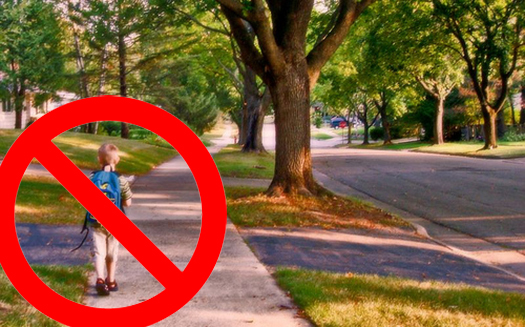A Placemaking Journal
The (Irrational) Criminalization of Walking
 If you’ve ever found yourself wondering, if only there was a concise resource available that articulates key reasons why walking is so much less prevalent in the modern age; why this presents unanticipated threats to safety, health, the environment, child development, and social equity; and what we in our communities can do to effectively advocate for change; and that argues the case in a manner compelling to folks across the political spectrum, then today’s your lucky day. Because yesterday marked the release of “The Criminalization of Walking” by law professor and congenial urbanist, Michael Lewyn, and it’s got all the tools you need to restore common sense, wherever you live.
If you’ve ever found yourself wondering, if only there was a concise resource available that articulates key reasons why walking is so much less prevalent in the modern age; why this presents unanticipated threats to safety, health, the environment, child development, and social equity; and what we in our communities can do to effectively advocate for change; and that argues the case in a manner compelling to folks across the political spectrum, then today’s your lucky day. Because yesterday marked the release of “The Criminalization of Walking” by law professor and congenial urbanist, Michael Lewyn, and it’s got all the tools you need to restore common sense, wherever you live.
First an anecdote
When I was in my early 20s, I and a group of friends migrated to Atlanta, Georgia, and rented a house in a suburban subdivision about a mile from the main road — a mile that featured no sidewalks.
One of my roommates was an aspiring artist with all the financial struggles that suggests. She didn’t have a car, took the bus, and could generally be found wearing paint-splattered overalls.
One day she was walking home from the bus stop and a black Mercedes pulled up along side her. The powered, heavily tinted window came down and the driver, a middle aged man, said, “Excuse me. You are… selling something?”
The random nature of the question left my friend momentarily confused so he continued. “You are selling something? There’s no door-to-door selling allowed in this neighborhood.”
She finally figured out where the questions were heading. “Uhh, no,” she said. “I’m walking home. I’m your neighbor.”
That was the first time the idea was introduced to me that walking was weird and that it rendered you suspect.
Lewyn to the rescue.

Squash that nonsense
I have no way of knowing whether the Mercedes driver in my friend’s story had bad intentions. That’s not really the point. The point is that we’ve progressed to a moment in time where walking is seen almost as a novelty or action of last resort and where our accommodation of and reliance on automobiles has resulted in a regulatory environment in which the act of walking is increasingly stigmatized and disincentivized, thus making the assertion that few people walk an increasingly self-fulfilling prophesy.
Lewyn examines all this through the lens of jaywalking laws and child endangerment statutes, pointing out the irrationality inherent in the justifications used to defend both. A few tidbits:
- Where jaywalking is not an offense or in areas where it’s not enforced or enforced with inconsequential penalties, rates of pedestrian deaths are greatly reduced.
- Statistically speaking, were a parent intentionally seeking to have their child abducted they would need to leave them outside, unattended, for 500,000 years before it would be likely to happen.
- An American child is fifty times more likely to die from a car crash than from an abduction by a stranger.
Check it out
I can’t provide a better overview than the author himself and so I’ll leave it to you to dig in deeply. Download the full article here.
As Lewyn says, “It is time for the law to give Americans the freedom to walk again.”
If PlaceShakers is our soapbox, our Facebook page is where we step down, grab a drink and enjoy a little conversation. Looking for a heads-up on the latest community-building news and perspective from around the web? Click through and “Like” us and we’ll keep you in the loop.


